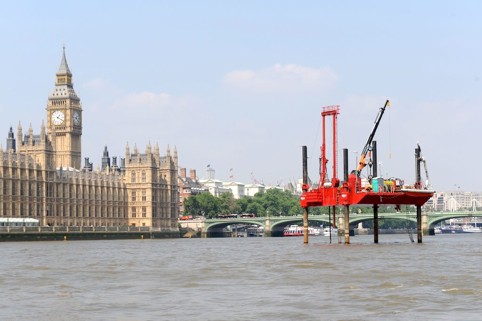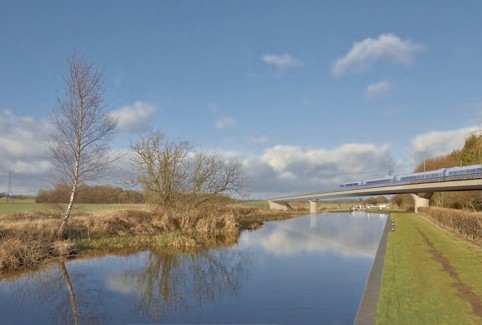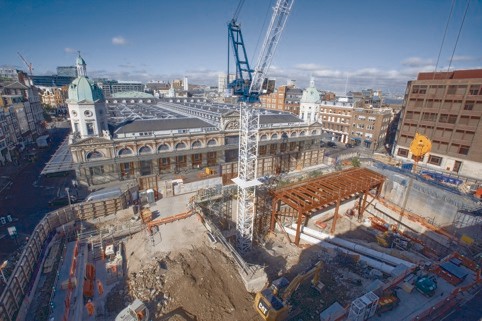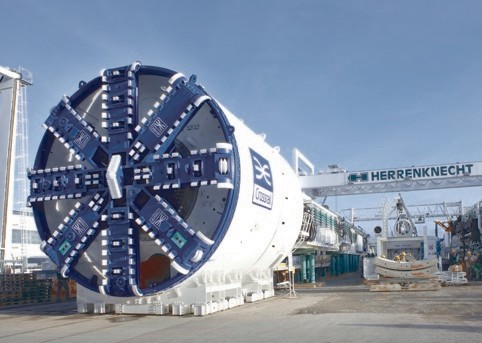Is Britain on the verge of a mini infrastructure renaissance? Such words come naturally after periods of gloom and what some politicians characterise as ‘under investment’, but there are signs, which is good news for engineers.
The National Infrastructure Plan (NIP), which was published last month, shows how the government plans to spend £375bn on energy, transport, communications and water projects over the next two decades. Although there will be no new money coming from the public purse, it has created a focus for other investors such as the big pension funds and the insurance industry, which says it will spend another £25bn over the next five years.

This is also good news because more than half of the 646 projects included in the NIP are earmarked to be funded by the private sector. As all good civil engineers know, you can’t pave a road with good intentions alone. In the immediate term at least, the government’s spending review of 2013 included a commitment to a £50bn capital investment in 2015, which will be aimed at ‘roads, rail and bridges’ among other projects. The current crop of proposals includes some major items, which are all gaining momentum.
Despite the usual objections and the political arguments, HS2, the extension of the high-speed rail network to the Midlands and the north of England, looks increasingly likely to become a reality; conversely political and public support for Crossrail 2 — a combined underground and overground railway between Alexandra Palace and Hertfordshire to various locations in south-west London and Surrey, running up to 30 trains per hour — is also looking promising.
Work is already underway on the Queensferry crossing, Scotland’s largest infrastructure project in 25 years, which will replace the existing Forth Road Bridge as the main crossing by 2016. Other major bridge projects include the Mersey Gateway Project, a major scheme to build a new six-lane toll bridge over the Mersey between the towns of Runcorn and Widnes that will relieve the congested and ageing Silver Jubilee Bridge.

But perhaps the most ambitious, yet the most invisible, of projects in the pipeline is the Thames Tideway Tunnel. This is a £4.6bn (current estimated cost) sewer that will help to tackle the problem of overflows from London’s Victorian sewers and is intended to protect the River Thames from increasing pollution for the next 100 years.
The tunnel will be the largest ever undertaken in the UK’s water industry: it will follow the course of the River Thames for 25km from Acton in west London to Abbey Mills in the east; it will have a diameter of 7.2m and fall from a depth of 30m in the west to 70m in the east. The tunnel will capture sewerage that otherwise would overflow into the Thames and convey it to the Beckton Sewerage Treatment Works (currently being expanded) via the Lee Tunnel, which is already under construction.
The proposal is currently being considered by the planning inspectorate and, subject to consent, construction is due to begin in 2016 and will involve 24 construction sites across London.
The question is, will there be enough skilled civil engineers available in the UK to carry out such an extensive and varied programme of work?
It is a question facing all of the major engineering contractors in the sector. Chris Marsh, HR director for resourcing at Atkins, said recruitment remained competitive and challenging. ‘We want to recruit the best people who have the right skills and approach to work, which will exceed our clients’ expectations. However, there is only a relatively small pool of candidates to choose from. Ultimately it boils down to the fact that the UK does not produce enough engineers, which is why Atkins and our industry peers and bodies are putting so much effort in trying to address this shortage.’

Atkins recruits across a wide range of engineering disciplines, said Marsh, and at present most of the company’s vacancies were for civil, structural and mechanical engineers. ‘This is because these are skills sets that are used in a variety of business areas such as rail, highways, water and energy. We also have some business-specific disciplines in high demand, particularly signalling engineers for our rail business and aviation engineers for our aerospace business. Both are high-growth areas, which is why these disciplines are in high demand.’
Marsh said the major transport infrastructure schemes in London alone, including the Northern line extension, London Bridge station, Crossrail and Crossrail 2, would create a demand for engineers with a range of skills from tunnelling to stations. ‘As the UK seeks to tackle the challenge of providing sufficient power to homes and businesses, energy is another sector that is likely to experience a high demand for civil engineers,’ he added.
Like other businesses in the sector, Marsh said Atkins invests in training and development of staff in order to secure the necessary skills.
‘The demands of our clients and their end users continue to evolve, which means we need to think differently and change the way we deliver projects. Building Information Modelling (BIM) is a good example of how work will need to be carried out in a very different way to how it has been done traditionally. Our clients buy the skills and knowledge of our people, so investing in training and development is essential for our business, as well as offering the career development opportunities that many people strive for.’

The shortage of qualified engineers is an issue that the entire industry is trying to address. According to the EngineeringUK Report 2014, an industry-wide review, the education system in Britain does not have either the current capacity or the rate of growth needed to meet the forecast demand for skilled engineers by 2020.
The shortage is so severe in the UK that engineering roles across the civil sector appear on the latest list of approved jobs compiled by the Migration Advisory Committee. Roles in construction-related ground engineering include: geotechnical engineer; tunnelling engineer; engineering geologist; hydrogeologist; geophysicist; contaminated land specialist; geo-environmental specialist; and landfill engineer. In the oil and gas sector, the shortage list also includes: drilling engineer; fluids engineer; and reservoir engineer.
The Institution of Civil Engineers (ICE), which contributed to the report, said a whole range of work was being undertaken to address the shortage, particularly in secondary education.
‘We have a dedicated under-19s programme that involves a range of engagement activities with schools — from special visits and mentoring to competitions — to ensure we are promoting civil engineering to both girls and boys at an early age,’ a spokesperson for ICE said.
‘We are also part of the Tomorrow’s Engineers initiative, which, among other things, brings engineering into the classroom to give young people the chance to get hands-on with engineering and ask questions about what real-life engineering jobs entail. A special week under the same Tomorrow’s Engineers banner also took place at the start of November, led by the government and supported by engineering institutions and companies. ICE is also a key supporter of the yearly Big Bang Fair — the single largest celebration of science and engineering for young people in the UK.’
But collaboration between industry, academia and government is the key to solving the problem, said Nick Baveystock, director-general of the ICE. Commenting on a recent survey of the industry’s needs, he said: ‘We — the engineering profession, with industry and academia — will achieve much more and carry far greater impact if we co-ordinate and combine our efforts. There is much we already do collaboratively, but we must do more and this is a call for action that must be heeded.’




Project to investigate hybrid approach to titanium manufacturing
What is this a hybrid of? Superplastic forming tends to be performed slowly as otherwise the behaviour is the hot creep that typifies hot...